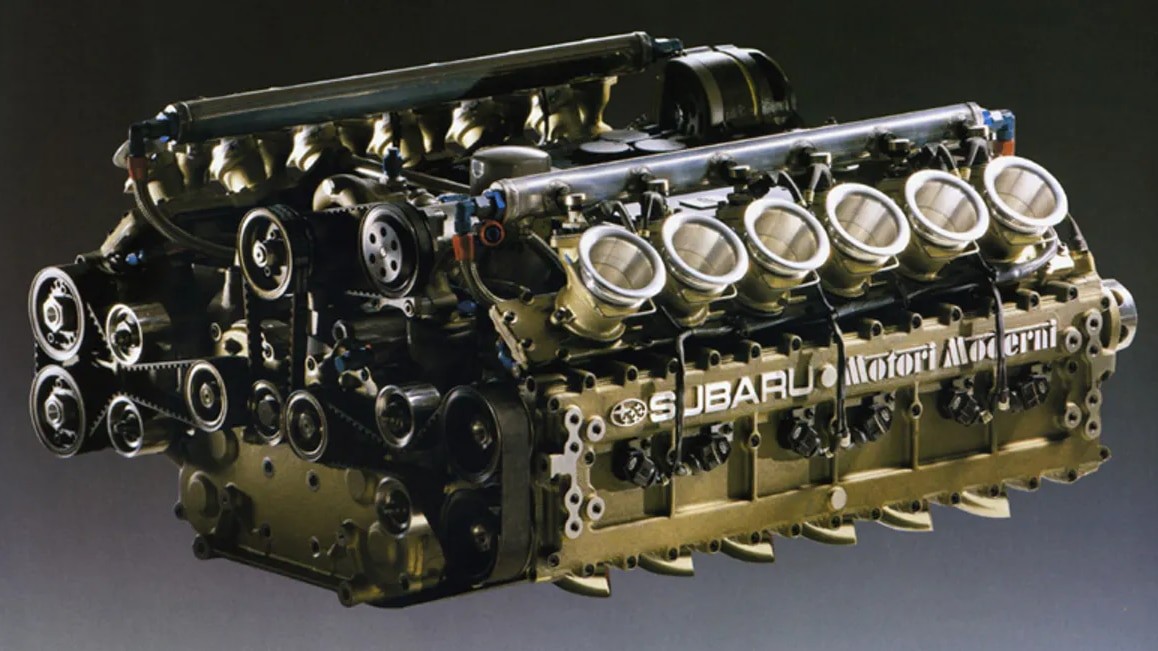Greetings one and all,
So as I'm going slightly mad without F1, I'm re-writing some old Formula 1 stuff on my website. I've just created a new page, entirely about downforce, that I A: would like to share and B: would value feedback on. I will of course, give credit where credit is due for anything I add in.
https://meerkatmusings.co.uk/formula-1/formula-1-explained/formula-1-explained-downforce/
Perhaps the single most critical element to the performance of a Formula 1 car (and other series) is downforce, which is exactly as it sounds - it's the force that pushes down, keeping the car glued firmly to the road. But what is it?
 Niki Lauda's title-winning Ferrari from 1975
Niki Lauda's title-winning Ferrari from 1975
Aerodynamic downforce is all about airflow around the car. It's something that affects every car, from Formula 1, to Indycar, to a road car. F1 teams look to manipulate airflow as cleverly as possible, to maximise it and therefore keep the car sticking to the road, even around high-speed corners. In fact, the faster the car goes, the more downforce gets generated, giving the driver more grip around bends and curves. A lot of downforce comes from how the front wing directs air around the bodywork and floor of the car.
 Ricciardo Patrese drives the Williams FW14
Ricciardo Patrese drives the Williams FW14
Within the boundaries of F1's ever-changing rules, teams have come up all kinds of different ideas around controlling airflow. Front wings have become increasingly sophisticated (compare the 1975 Ferrari to the 1992 Williams), and the chassis of the cars have also changed considerably. The regulations play a big part in what teams can and cannot do, but over time various notions have come forward to tackle downforce and make it work.
 One of the most recent Mercedes F1 cars. Note the flaps on the front wing.
One of the most recent Mercedes F1 cars. Note the flaps on the front wing.
Downforce isn't always everything
Sometimes, albeit not always, a car capable of generating good downforce can outperform a car with a more powerful engine. In recent times this is best demonstrated by the all-conquering Red Bull cars from 2010-2013. Equipped with Renault engines that weren't as powerful as the Mercedes and Ferrari engines of other teams, they nonetheless dominated four consecutive seasons, and they did so because they were the best-designed cars at generating downforce.
 The RB7 was unbeatable in 2011
The RB7 was unbeatable in 2011
Sometimes downforce can hamper a car's performance because it generates too much of it. Downforce creates drag, which on power circuits like Monza will actually slow down the car. To compensate for this, teams can adjust the wings (and the various other fins and flaps on the car). Sometimes, a team will achieve the perfect marriage of best engine and excellent aerodynamic design...
 The Mercedes WR05, driven by Lewis Hamilton
The Mercedes WR05, driven by Lewis Hamilton
The beginning of the new turbo hybrid era in 2014 saw Mercedes develop what was comfortably the best engine, but it also saw them design a car that was very strong aerodynamically. The rear of the car was very compact, in part due to the configuration of the engine, and this shapely bodywork gave the Silver Arrows a terrific combination of the best of both worlds. It meant they would win 16 of 19 races in 2014. However, 2014 continued to show that aerodynamic downforce could overcome raw engine power. The only other team to win races in 2014 were Red Bull, who struggled with a lack of power but still finished ahead of the Mercedes-powered Williams team, and Ferrari, to finish second in the constructor's championship.
In short, you cannot achieve greatness in Formula 1 without an understanding of downforce. This is equally true of the teams who design the car, and the drivers who make the leap from karting to the more sophisticated racing machines of advanced series. The idea that you can (and indeed should) carry more speed through a corner is counter-intuitive to many racers, and it requires unlearning some of the things they pick up in karting. In some cases the driver doesn't quite manage to 'get' downforce and how it affects the dynamics of racing. Needless to say, you won't make it as an F1 driver if you can't master downforce.
This is important not just for the overall handling of the car, but for getting punchy with other racers. F1 drivers need to understand how downforce is affected by the 'dirty air' from the car in front. What do I mean by dirty air? Read on...
In clear air, the flow around the car is smooth. It gets sucked through the front wing, around the floor and bodywork, and through the rear wing. As it gets spat out of the rear of the car, it's disrupted and turbulent, which makes it more difficult for the following car to suck in, which affects the downforce and therefore grip through corners. The trailing driver will have to correct for the lower grip and handling, which makes it difficult to stay close behind the car in front. As the designs of wings and cars have become more complicated, this problem has gotten worse, affecting the quality of the racing. To counter this, the DRS (drag reduction system) was introduced in 2010 to make it easier to close up on the car in front.
 The rear wing opens, changing airflow patterns
The rear wing opens, changing airflow patterns
When within one second of the car in front, and only in designated DRS zones, the chasing car can open a slot in the rear wing, reducing drag (obviously) and gaining an advantage in speed. This often gives the chasing driver an opportunity to overtake, which might otherwise not exist.
Problems
The Drag Reduction System exists because of a fundamental issue within Formula 1. With the complex nature of how F1 teams use wings and flaps and various little tricks to generate downforce, it is all too easy to disrupt that downforce in some way, which in turn makes close racing impossible. To many fans, this simply isn't exciting to watch, and F1 relies heavily on sponsorship and fan appeal. To combat this, major changes to the design of F1 cars are coming - originally proposed for 2021, but with the Coronavirus pandemic, these won't now be introduced until 2022. These are radical plans to simplify the cars, and if they pan out in the manner that F1's owners hope, we will see much closer on-track action than in previous years.
 The official concept for the 2022 designs
The official concept for the 2022 designs
Without going into excruciating detail around things like barge boards, wing heights and exhaust manipulation, the expected difference in downforce when right behind another car is set to improve considerably. At the moment, it's thought the chasing car loses as much 45% of its downforce, whereas it would only lose around 16% under the new rules.
Ground Effect
One of the planned changes is to re-introduce the once-banned notion of ground effect downforce. This is generated by the design of the underside of the car, and during the 1980s this idea was ultimately banned over safety fears, as it was allowing some hair-raising cornering speeds. Part of the reason for this is that downforce usually creates a drag on the car - so at high-speed races, you don't want high downforce - but with the ground effect, this isn't nearly as much of a problem.
How this will all pan out when the new cars hit the track and start racing remains to be seen. Will the new rules allow for teams which have suffered in the turbo-hybrid era to close the gap? Or will the likes of Mercedes and Ferrari continue to be at the front of the pack? We shall have to wait and see. One thing is certain - downforce will be as important as ever.
So as I'm going slightly mad without F1, I'm re-writing some old Formula 1 stuff on my website. I've just created a new page, entirely about downforce, that I A: would like to share and B: would value feedback on. I will of course, give credit where credit is due for anything I add in.
https://meerkatmusings.co.uk/formula-1/formula-1-explained/formula-1-explained-downforce/
Perhaps the single most critical element to the performance of a Formula 1 car (and other series) is downforce, which is exactly as it sounds - it's the force that pushes down, keeping the car glued firmly to the road. But what is it?

Aerodynamic downforce is all about airflow around the car. It's something that affects every car, from Formula 1, to Indycar, to a road car. F1 teams look to manipulate airflow as cleverly as possible, to maximise it and therefore keep the car sticking to the road, even around high-speed corners. In fact, the faster the car goes, the more downforce gets generated, giving the driver more grip around bends and curves. A lot of downforce comes from how the front wing directs air around the bodywork and floor of the car.
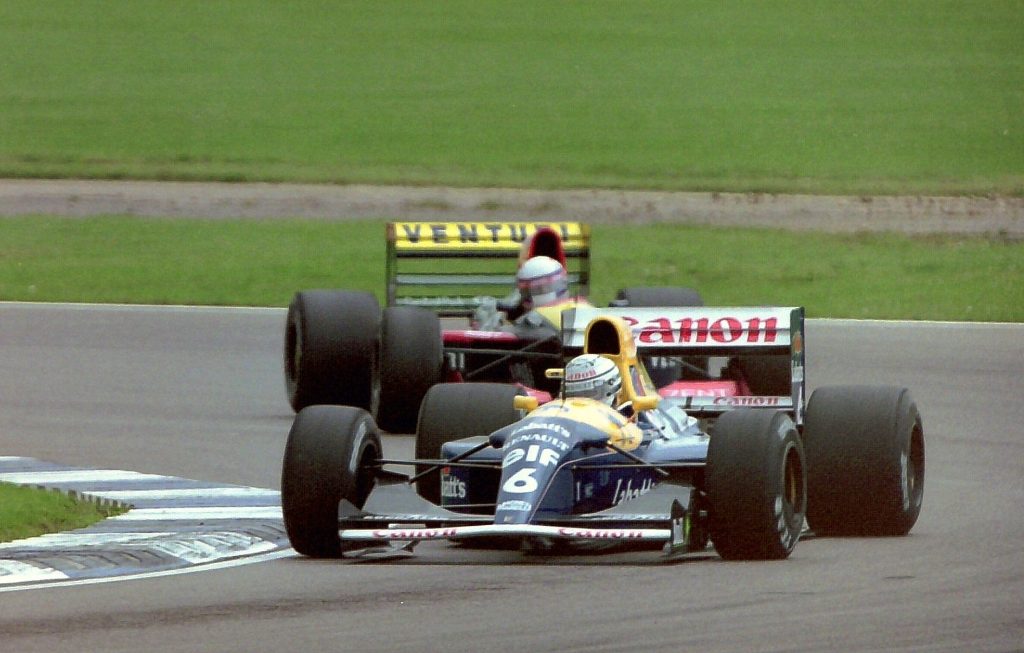
Within the boundaries of F1's ever-changing rules, teams have come up all kinds of different ideas around controlling airflow. Front wings have become increasingly sophisticated (compare the 1975 Ferrari to the 1992 Williams), and the chassis of the cars have also changed considerably. The regulations play a big part in what teams can and cannot do, but over time various notions have come forward to tackle downforce and make it work.
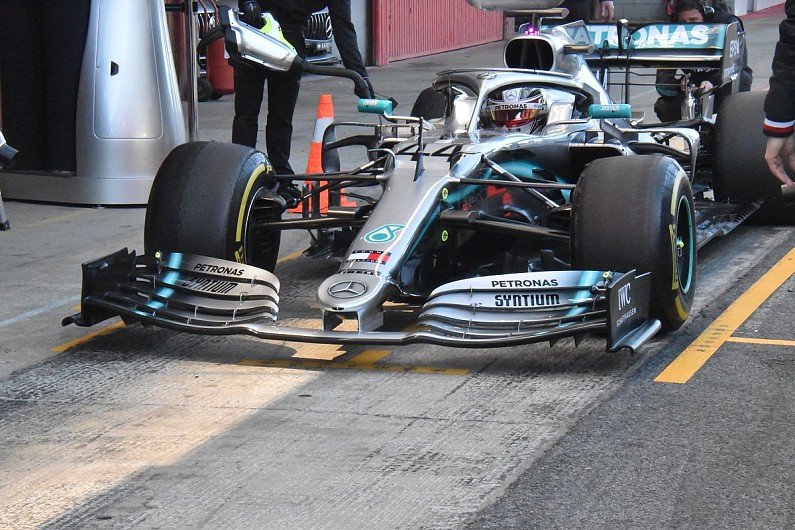
Downforce isn't always everything
Sometimes, albeit not always, a car capable of generating good downforce can outperform a car with a more powerful engine. In recent times this is best demonstrated by the all-conquering Red Bull cars from 2010-2013. Equipped with Renault engines that weren't as powerful as the Mercedes and Ferrari engines of other teams, they nonetheless dominated four consecutive seasons, and they did so because they were the best-designed cars at generating downforce.
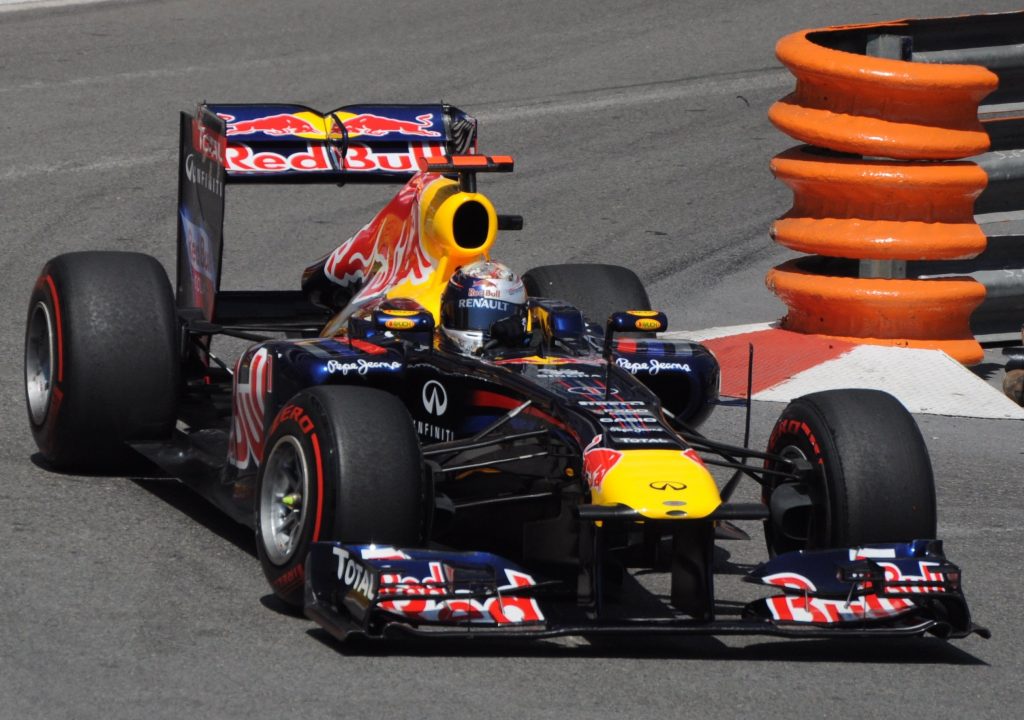
Sometimes downforce can hamper a car's performance because it generates too much of it. Downforce creates drag, which on power circuits like Monza will actually slow down the car. To compensate for this, teams can adjust the wings (and the various other fins and flaps on the car). Sometimes, a team will achieve the perfect marriage of best engine and excellent aerodynamic design...
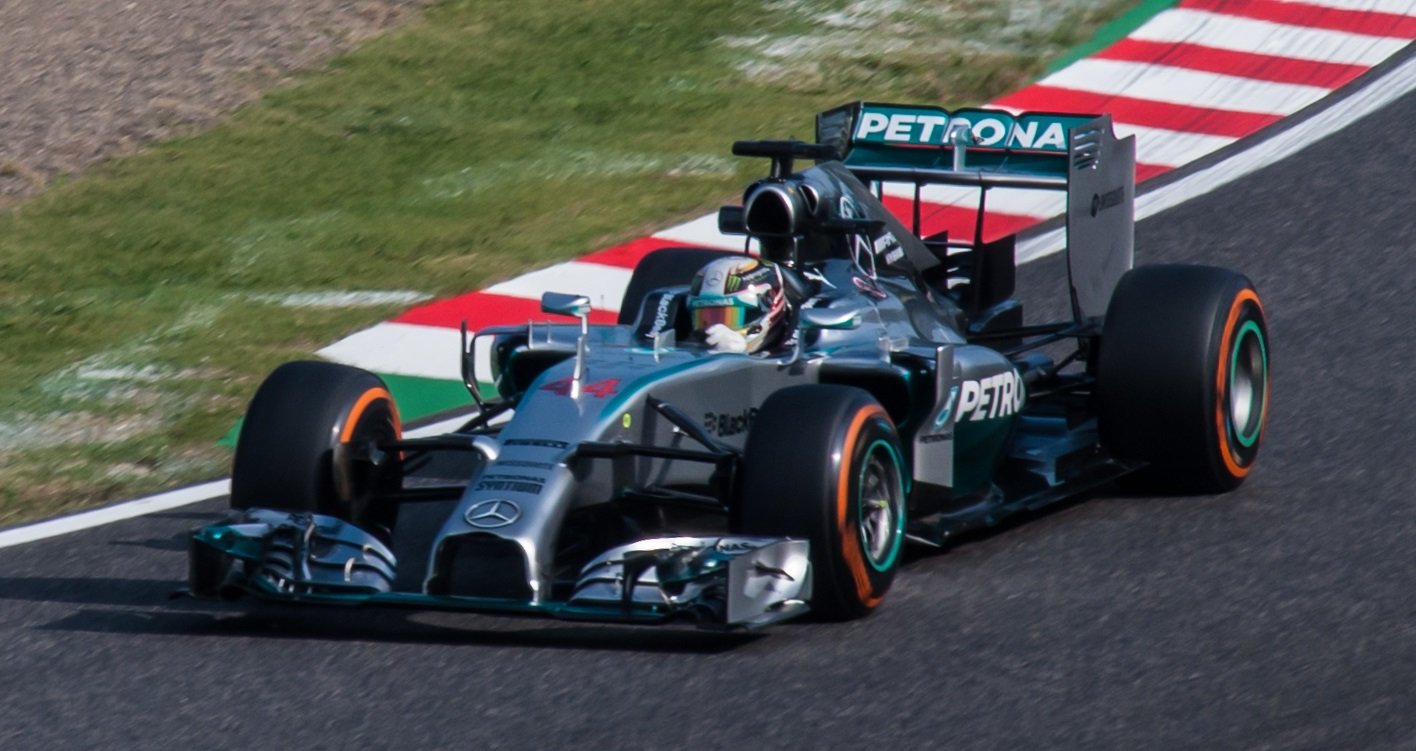
The beginning of the new turbo hybrid era in 2014 saw Mercedes develop what was comfortably the best engine, but it also saw them design a car that was very strong aerodynamically. The rear of the car was very compact, in part due to the configuration of the engine, and this shapely bodywork gave the Silver Arrows a terrific combination of the best of both worlds. It meant they would win 16 of 19 races in 2014. However, 2014 continued to show that aerodynamic downforce could overcome raw engine power. The only other team to win races in 2014 were Red Bull, who struggled with a lack of power but still finished ahead of the Mercedes-powered Williams team, and Ferrari, to finish second in the constructor's championship.
In short, you cannot achieve greatness in Formula 1 without an understanding of downforce. This is equally true of the teams who design the car, and the drivers who make the leap from karting to the more sophisticated racing machines of advanced series. The idea that you can (and indeed should) carry more speed through a corner is counter-intuitive to many racers, and it requires unlearning some of the things they pick up in karting. In some cases the driver doesn't quite manage to 'get' downforce and how it affects the dynamics of racing. Needless to say, you won't make it as an F1 driver if you can't master downforce.
This is important not just for the overall handling of the car, but for getting punchy with other racers. F1 drivers need to understand how downforce is affected by the 'dirty air' from the car in front. What do I mean by dirty air? Read on...
In clear air, the flow around the car is smooth. It gets sucked through the front wing, around the floor and bodywork, and through the rear wing. As it gets spat out of the rear of the car, it's disrupted and turbulent, which makes it more difficult for the following car to suck in, which affects the downforce and therefore grip through corners. The trailing driver will have to correct for the lower grip and handling, which makes it difficult to stay close behind the car in front. As the designs of wings and cars have become more complicated, this problem has gotten worse, affecting the quality of the racing. To counter this, the DRS (drag reduction system) was introduced in 2010 to make it easier to close up on the car in front.
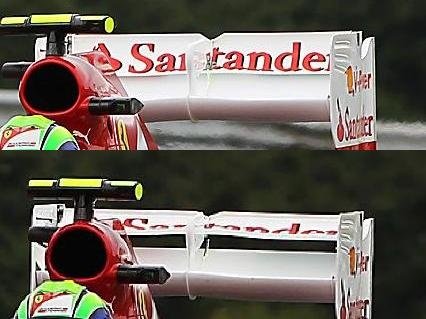
When within one second of the car in front, and only in designated DRS zones, the chasing car can open a slot in the rear wing, reducing drag (obviously) and gaining an advantage in speed. This often gives the chasing driver an opportunity to overtake, which might otherwise not exist.
Problems
The Drag Reduction System exists because of a fundamental issue within Formula 1. With the complex nature of how F1 teams use wings and flaps and various little tricks to generate downforce, it is all too easy to disrupt that downforce in some way, which in turn makes close racing impossible. To many fans, this simply isn't exciting to watch, and F1 relies heavily on sponsorship and fan appeal. To combat this, major changes to the design of F1 cars are coming - originally proposed for 2021, but with the Coronavirus pandemic, these won't now be introduced until 2022. These are radical plans to simplify the cars, and if they pan out in the manner that F1's owners hope, we will see much closer on-track action than in previous years.
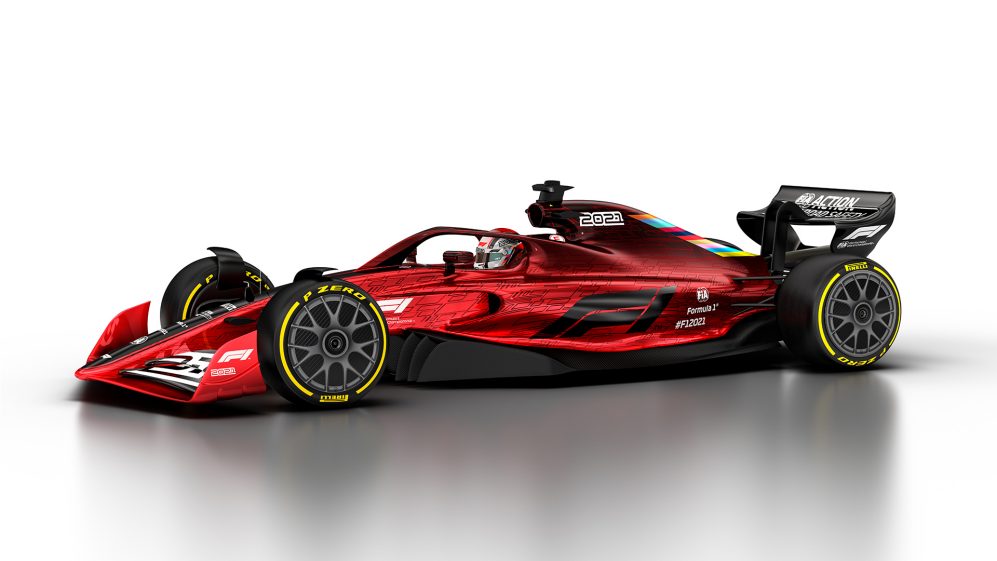
Without going into excruciating detail around things like barge boards, wing heights and exhaust manipulation, the expected difference in downforce when right behind another car is set to improve considerably. At the moment, it's thought the chasing car loses as much 45% of its downforce, whereas it would only lose around 16% under the new rules.
Ground Effect
One of the planned changes is to re-introduce the once-banned notion of ground effect downforce. This is generated by the design of the underside of the car, and during the 1980s this idea was ultimately banned over safety fears, as it was allowing some hair-raising cornering speeds. Part of the reason for this is that downforce usually creates a drag on the car - so at high-speed races, you don't want high downforce - but with the ground effect, this isn't nearly as much of a problem.
How this will all pan out when the new cars hit the track and start racing remains to be seen. Will the new rules allow for teams which have suffered in the turbo-hybrid era to close the gap? Or will the likes of Mercedes and Ferrari continue to be at the front of the pack? We shall have to wait and see. One thing is certain - downforce will be as important as ever.




